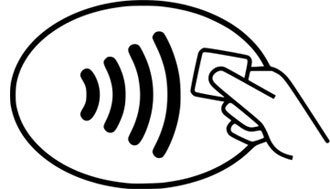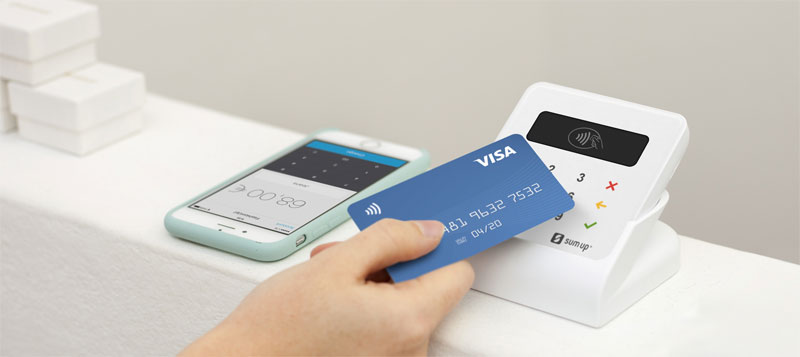
The payment industry has changed enormously in the last few decades, and at lightning speed in the last few years alone.
People have long exchanged goods through the concept of credit, but today the sheer amount of purchases made with credit and debit cards is monumental.
A lot has happened since the sliding manual imprinters of the 80s and 90s, which meant 3 pieces of paper got embossed with customers’ details and given to merchant, buyer and bank or Credit Card Company.
Today consumers are constantly on the go and expecting convenience and speed. So to keep up with customers’ expectations, the payment industry has developed a multitude of ways to speed up card payments.
As the industry is booming, many options have become available and thus credit card processing is both easier and cheaper for business owners, and especially small businesses.
Payment processing – how it works?
For long businesses have known that by accepting credit cards as payment for their products and services, more sales can be made. People can shop and pay the credit card company at a later date. But how do payment processing work?
Card transactions involve a 2-step process, involving authorization and settlement. Different fees are applicable at each point.
![]() Authorization
Authorization
Authorization is a process that ensures a customer has sufficient funds or credit to make a purchase. The data contained in the card’s magnetic strip or chip gets captured and forwarded to the credit card company or the bank who check that the buyer has sufficient funds.
![]() Settlement
Settlement
Once this has been processed they will authorise the purchase, and send the information to the vendor’s card device. Money is not transferred to the merchant instantly, but rather ‘captured’. The customer’s and vendor’s banks will settle later as payments are processed in bulk. This is called settlement and happens daily or over a few days.
Card processors in the market
Card processors are companies that provide products and services that enables a business owner to take card payments. Some take monthly fees for their services, others only require a low rate per purchase. Companies like Payline Data, Flagship Merchant Services, PayPal, Square are one of the biggest service providers on the market.
The cost of their services differ, and so it is important for each business to look at their needs before chosing a service provider. Generally, more purchases are processed, smaller the fee. Some payment processors however offer a flat rate fee, for example SumUp and iZettle.
Technology used to process card payments
The technology of today just keeps innovating itself and the race to develop the next ‘big thing’ is on 24/7. The latest technologies in use currently enables shoppers to buy faster and promises better card safety than before. The technologies and how they work are explained in the list below:
- EMV: Europay, Mastercard and Visa
The current standard for debit and credit card processing. It reads the chip in the card, enabling two-way communication. It replaced the predecessor, the magnetic stripe card, which could easily be cloned and used in card fraud.
More info about EMV - Magnetic Secure Transmission (MST)
With an app and a fob attached to any smartphone, this technology allows communication with a terminal’s magnetic stripe reader, so customers can make a swift purchase. There is no need to buy a new terminal to use this technology, only a software update is required.
More info about MST - Radio Frequency Identification (RFID)
A tiny memory chip and antenna keeps and transmits the information. This technology is used for contactless mobile credit cards processing, also called ‘Tap-to-pay’. When a customer puts their card less than 10 cm away from the payment terminal, the chip is powered with radio waves and information can be transmitted from the card to the device.
More info about RFID - Near Field Communication (NFC)
Basically works like RFID technology and evolved from this, but is seen as a safer option. Apple, Google Nexus and many more phone makers use this technology within their smartphones. It can also be added via a SIM.
More info about NFC - Bluetooth technology
With this technology, payments can be made from as far as 50 metres from the sales point. The transmission is continuous and can be used within stores to receive coupons, updates and deals.
More info about Bluetooth technology
Contactless payment processing
 The biggest payment trend right now is ‘Tap-to-pay’ technology, which is used by the recently launched Apple Pay and Google Wallet. Not only do they use RFID and NFC technology so customers can make payments, but they also allow people to choose from a range of debit and credit cards that they own.
The biggest payment trend right now is ‘Tap-to-pay’ technology, which is used by the recently launched Apple Pay and Google Wallet. Not only do they use RFID and NFC technology so customers can make payments, but they also allow people to choose from a range of debit and credit cards that they own.
In the case of Apple, they have worked with major banks and credit cards companies, like American Express and Visa to develop their idea of a virtual wallet. Customers download an app and can link cards and accounts to Apple Pay through a verification process for security.
Once at the tills, users will have to hover their phone by the card reader, complete fingerprint ID and the purchase will be authorised. Additional security measures, like PIN can also be added.
Can all businesses accept these new ways to pay and will it be expensive?
Apple Pay can be accepted by merchants with a conventional terminal providing its software has been updated. Small businesses can also use the latest payment processors who make off-site sales easy and processing low-cost. The next section will look in more detail about the options out there.
Mobile card readers
In order to complete a card transaction, businesses need a payment device. This is essentially the machine the card goes in when processing a purchase. These can be bought or rented. In the past these used to be expensive for business owners, especially when updates of hardware or software were necessary.
Thankfully, this is not the case anymore.
In a vibrant and growing market new developments pop up and generally for lower prices. Today’s market is all about mobile card payment devices. Not only do they complete transactions speedily, but they are perfect for businesses on the move: pop-up stores, market stall holders and sales people working away from the office.
Furthermore, obtaining a payment device has never been as easy and as cost-effective.
Sales can be made instantly, as long as there is an internet connection and a smartphone or tablet.
Currently, there are various companies offering mobile card readers in UK. The two most popular are:
- iZettle
 The company has developed a card reader that is currently accepted in many European countries, as well as Mexico and Brazil. Their EMV card device can be connected to the Bluetooth or the audio jack of a merchants tablet or smartphone.It is small and easy to bring with you should you need to do business out and about. The iZettle card reader takes card and contactless payments with speed using wireless technology. It can be purchased at a low cost and the retailer pays a flat rate 1.75% per sale. Basically, the more you sell, the lower the rate is.Full iZettle review
The company has developed a card reader that is currently accepted in many European countries, as well as Mexico and Brazil. Their EMV card device can be connected to the Bluetooth or the audio jack of a merchants tablet or smartphone.It is small and easy to bring with you should you need to do business out and about. The iZettle card reader takes card and contactless payments with speed using wireless technology. It can be purchased at a low cost and the retailer pays a flat rate 1.75% per sale. Basically, the more you sell, the lower the rate is.Full iZettle review - SumUp
 SumUp provides small terminal with the similar features as the iZettle. The company takes also a flat transaction rate of around 1.9%, depending on country of sale.Businesses owners have to only order the card reader, download an app and connect the device to the internet. As simple as that.Full SumUp review
SumUp provides small terminal with the similar features as the iZettle. The company takes also a flat transaction rate of around 1.9%, depending on country of sale.Businesses owners have to only order the card reader, download an app and connect the device to the internet. As simple as that.Full SumUp review
These are just a couple of options for small businesses. Taking time to review the mobile card payment providers (and their devices) is advisable before making a decision. Currently the cost of card readers, like SumUp or iZettle, ranges from £19-£50.

Mobile card reader – SumUp
Last updated: 26/07/2019





